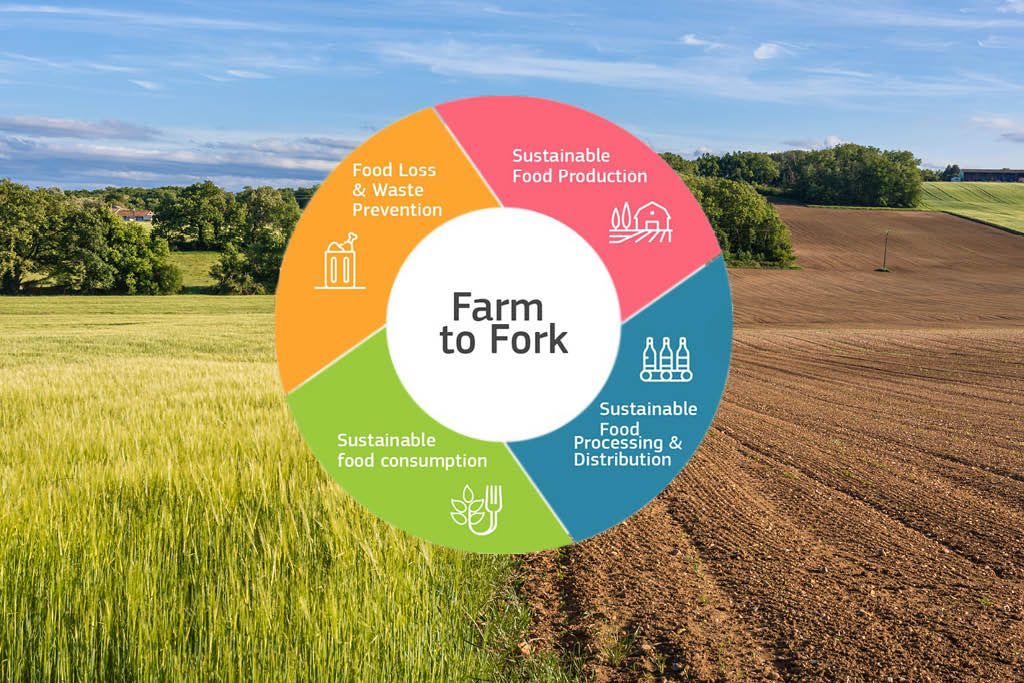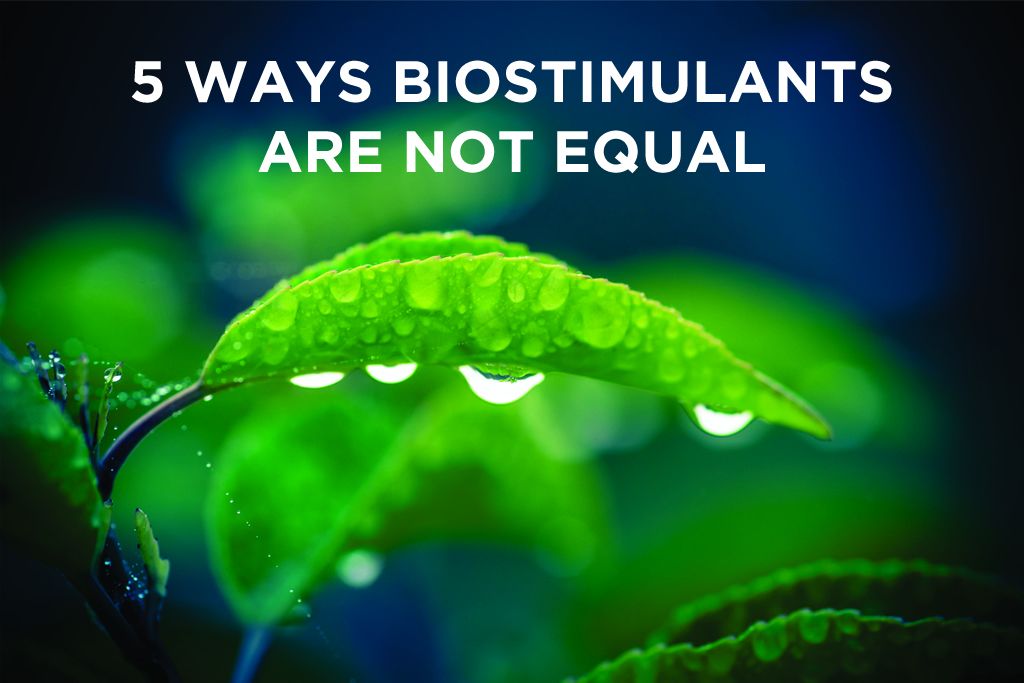BLOG #36

Origin and evolution of the term biostimulant
Plant biostimulants, as a promising and environmental-friendly innovation, have received considerable attention in the last two decades, especially due to their ability to enhance flowering, plant growth, fruit set, crop productivity, nutrient use efficiency (NUE) and crop tolerance against a wide range of abiotic stressors.
The concept of biostimulant is quite recent but what has been its origin and evolution until today?
In this article we collected the most relevant stages of the evolution of the term biostimulant from its origin until the first official and formal definition included in the new EU Fertilizing Product Regulation (EU Regulation 2019/1009) which entered into force on july 16, 2022.

⦁ 1933: the term biostimulant is linked to the concept of “biogenic stimulant” theory attributed to Prof. V.P. Filatov. Filatov proposed that biological materials derived from various organisms, including plants, that have been exposed to stressors could affect metabolic and energetic processes in humans, animals, and plants.
⦁ 1956: Blagoveshchensky further developed these ideas with specific reference to their application for plants, considering biogenic stimulants as “organic acids with stimulating effects due to their dibasic properties which can enhance the enzymatic activity in plants.” Filatov’s concept, was, however, not limited to these compounds alone.
⦁ 1994: Herve’s pioneering review provides the first real conceptual approach to biostimulants. Herve suggests the development of novel “bio-rational products” should proceed on the basis of a systemic approach founded in chemical synthesis, biochemistry, and biotechnology as applied to real plant physiological, agricultural, and ecological constraints. He suggests these products should function at low doses, be ecologically benign and have reproducible benefits in agricultural plant cultivation.
⦁ 1997: the first definition of the word biostimulants appeared in a web journal dedicated to turf maintenance professionals, called Ground Maintenance. In this web journal Zhang and Schmidt from the Department of Crop and Soil Environmental Sciences of the Virginia Polytechnic Institute and State University defined biostimulants as “materials that, in minute quantities, promote plant growth”. By using the words “minute quantities” for describing biostimulants, the authors aimed at distinguishing biostimulants from nutrients and soil amendments, which also promote plant growth but are applied in larger quantities. The biostimulants mentioned by this web article were humic acids and seaweed extracts. Later peer-reviewed papers by the same authors on the same or similar research did not necessarily use the term biostimulant. For instance, a paper describing the use of humic acids and seaweed extracts for increasing drought tolerance of turfgrass did not use the term biostimulant at all. The paper focused on the hormone-like activities of these compounds and the term ‘hormone-containing products’ was used instead of biostimulants. This choice could also be explained by the regulation in the United States, where the Environmental Protection Agency (‘EPA’) exempts “vitamin-hormone horticulture products” from registration under certain conditions. Zhang and Schmidt explained the biostimulation action by hormonal effects and, secondly, by protection against abiotic stress by antioxidants. The term “metabolic enhancers” was also used in later papers.
⦁ 2007: in the scientific literature, the word biostimulant was first defined by Kauffman et al. in a peer-reviewed paper, with modifications: “biostimulants are materials, other than fertilisers, that promote plant growth when applied in low quantities.” Worth mentioning is the addition of the words “other than fertilisers”, which is in line with the description of Zhang and Schmidt, but which was not explicitly included in their original definition. Kauffman et al. attempt to summarize what biostimulants are, by introducing a classification: “Biostimulants are available in a variety of formulations and with varying ingredients but are generally classified into three major groups on the basis of their source and content. These groups include humic substances (HS), hormone containing products (HCP), and amino acid containing products (AACP). HCPs, such as seaweed extracts, contain identifiable amounts of active plant growth substances such as auxins, cytokinins, or their derivatives”.
⦁ 2012: the European Commission has assigned an ad hoc study on plant biostimulants to evaluate the substances and materials involved, which was published by du Jardin as: “The Science of Plant Biostimulants – A bibliographic Analysis”. Based on the scientific literature (250 scientific articles using the term ‘biostimulant’ in their titles and/or abstracts), the following definition was proposed: “Plant biostimulants are substances and materials, with the exception of nutrients and pesticides, which, when applied to plant, seeds or growing substrates in specific formulations, have the capacity to modify physiological processes of plants in a way that provides potential benefits to growth, development and/or stress responses”. du Jardin concluded that PBs are very heterogeneous materials, and proposed in his study eight categories of substances that acts as biostimulants: humic substances, complex organic materials (obtained from agro-industrial and urban waste products, sewage sludge extracts, composts, and manure), beneficial chemical elements (Al, Co, Na, Se, and Si), inorganic salts including phosphite, seaweed extracts (brown, red, and green macroalgae), chitin and chitosan derivates, antitranspirants (kaolin and polyacrylamide), and free amino acids and N-containing substances (peptides, polyamines, and betaines); but did not include any microbial biostimulants.
⦁ 2015: in the frame of a special issue on “Biostimulants in Horticulture” conducted by Colla and Rouphael, a new definition was proposed by du Jardin, which was supported by scientific evidence about the mode of action, nature and types of effects of PBs on agricultural and horticultural crops. PBs were defined by du Jardin as follows: “A plant biostimulant is any substance or microorganism applied to plants with the aim to enhance nutrition efficiency, abiotic stress tolerance and/or crop quality traits, regardless of its nutrient content”. This definition could be completed by “By extension plant biostimulants also designate commercial products containing mixtures of such substances and/or microorganisms”. In the same year, in a special issue Colla and Rouphael proposed 6 non-microbial and 3 microbial categories of PBs: (i) chitosan, (ii) humic and fulvic acids, (iii) protein hydrolysates, (iv) phosphites, (v) seaweed extracts, (vi) silicon, (vii) arbuscular mycorrhizal fungi (AMF), (viii) plant growth-promoting rhizobacteria (PGPR), and (ix) Trichoderma spp.
⦁ 2019: the new EU regulation (EU) 2019/1009 known as Fertilising Product Regulation, formally recognized and provided for the first time an official definition for plant biostimulants: “A plant biostimulant shall be an EU fertilising product the function of which is to stimulate plant nutrition processes independently of the product’s nutrient content with the sole aim of improving one or more of the following characteristics of the plant or the plant rhizosphere: i) nutrient use efficiency, ii) tolerance to abiotic stress, iii) quality traits, or iv) availability of confined nutrients in the soil or rhizosphere”. Based on this definition, PBs are specified on the basis of agricultural functions claims and include diverse bioactive natural substances: (i) humic and fulvic acids, (ii) animal and vegetal protein hydrolysates, (iii) macroalgae seaweeds extracts, and (iv) silicon, as well as beneficial microorganisms: (i) arbuscular mycorrhizal fungi (AMF) and (ii) N-fixing bacteria of strains belonging to the genera Rhizobium, Azotobacter, and Azospirillum.
The term and the concept of biostimulant have been revised and updated several times over the years, reflecting the interest and the numerous studies that the scientific community has dedicated to this new category of products. The term biostimulant initially appeared as a versatile descriptor of any substance with a beneficial effect for plants and which does not fall into fertilizers, plant protection products and soil improvers. In other words, therefore, biostimulants were defined by means of a negative logic that excludes what they are not. In this way a dividing line was drawn between biostimulants and other categories of substances widely applied to crops such as fertilizers and plant protection products. In a second phase it was highlighted that the positive actions attributable to biostimulants can also be offered by bacteria and fungi, thus expanding the categories of biostimulants to include microorganisms as well. Finally, in 2019 the new EU Regulation 2019/1009, known as Fertilising Product Regulation, for the first time formally recognized plant biostimulants. In this new regulation biostimulants appear as a category of their own with unique rules that allow the commercialization in the European area.
- Plant biostimulants: Definition, concept, main categories and regulation – Patrick du Jardin (Scientia Horticulturae – 2015)
- Biostimulants in Plant Science: A Global Perspective – Oleg I.Yakhin, Aleksandr A.Lubyanov, Ildus A. Yakhin and Patrick H. Brown (Frontiers in Plant Science – 2017)
- Editorial: Biostimulants in Agriculture – Youssef Rouphael and Giuseppe Colla (Frontiers in Plant Science – 2020)

















